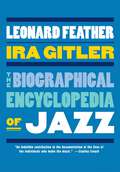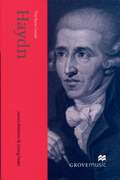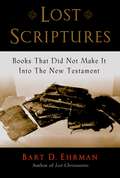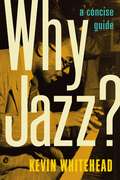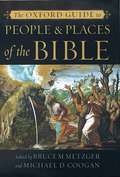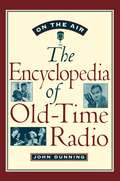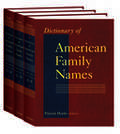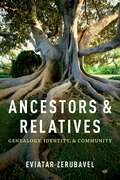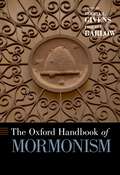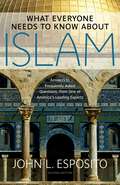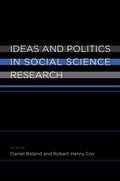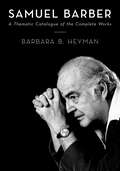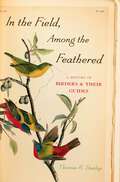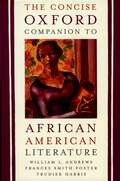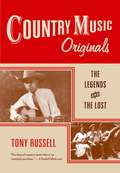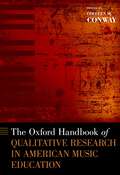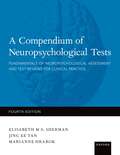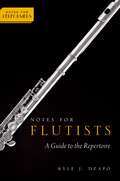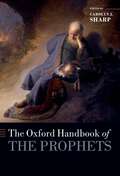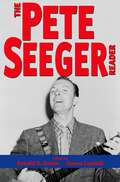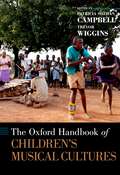- Table View
- List View
The Biographical Encyclopedia of Jazz
Do you want to know when Duke Ellington was king of The Cotton Club? Have you ever wondered how old Miles Davis was when he got his first trumpet? From birth dates to gig dates and from recordings to television specials, Leonard Feather and Ira Gitler have left no stone unturned in their quest for accurate, detailed information on the careers of 3.300 jazz musicians from around the world. We learn that Duke Ellington worked his magic at The Cotton Club from 1927 to 1931, and that on Miles Davis's thirteenth birthday, his father gave him his first trumpet. Jazz is fast moving, and this edition clearly and concisely maps out an often dizzying web of professional associations. We find, for instance, that when Miles Davis was a St. Louis teenager he encountered Charlie Parker and Dizzy Gillespie for the first time. This meeting proved fateful, and by 1945 a nineteen-year-old Davis had left Juilliard to play with Parker on 52nd Street. Knowledge of these professional alliances, along with the countless others chronicled in this book, are central to tracing the development of significant jazz movements, such as the "cool jazz" that became one of Miles Davis's hallmarks. Arranged alphabetically according to last name, each entry of this book chronologically lists the highlights of every jazz musician's career. Highly accessible and vigorously researched, The Biographical Encyclopedia of Jazz is, quite simply, the most comprehensive jazz encyclopedia available.
The New Grove Haydn (Grove Music Composer Biography Series)
The son of an 18th century Austrian wheelwright, Haydn is acknowledged for refining the symphony and string quartet and praised for his oratorios and masses. Deeply involved in the evolution of the Classical style, its subsequent growth can be seen in his own music. Indeed, he is considered to be one of the most significant composers of the Classical Period. Under his care the symphony and string quartet came to life, and the oratios and masses of his late years belong to the consummation of the classical spirit in music. This biography of Joseph Haydn is one in a new series of composer biographies, derived and adapted from the second edition of The New Grove Dictionary of Music and Musicians. These newly written biographies bring the best of the book-length pieces in The New Grove to a wider audience. Each title provides fresh new insights into the life and works of a major composer, derived from the most recent scholarship. In addition to a detailed and informative view of the subject's life and works, written by an expert in the field, each book includes comprehensive, tabular work-lists and a fully revised and updated bibliography.
Lost Scriptures: Books that Did Not Make It into the New Testament
by Bart D. EhrmanWhile most people think that the twenty-seven books of the New Testament are the only sacred writings of the early Christians, this is not at all the case. A companion volume to Bart Ehrman's Lost Christianities, this book offers an anthology of up-to-date and readable translations of many non-canonical writings from the first centuries after Christ--texts that have been for the most part lost or neglected for almost two millennia. Here is an array of remarkably varied writings from early Christian groups whose visions of Jesus differ dramatically from our contemporary understanding. Readers will find Gospels supposedly authored by the apostle Philip, James the brother of Jesus, Mary Magdalen, and others. There are Acts originally ascribed to John and to Thecla, Paul's female companion; there are Epistles allegedly written by Paul to the Roman philosopher Seneca. And there is an apocalypse by Simon Peter that offers a guided tour of the afterlife, both the glorious ecstasies of the saints and the horrendous torments of the damned, and an Epistle by Titus, a companion of Paul, which argues page after page against sexual love, even within marriage, on the grounds that physical intimacy leads to damnation. In all, the anthology includes fifteen Gospels, five non-canonical Acts of the Apostles, thirteen Epistles, a number of Apocalypses and Secret Books, and several Canon lists. Ehrman has included a general introduction, plus brief introductions to each piece. This important anthology gives readers a vivid picture of the range of beliefs that battled each other in the first centuries of the Christian era.
Why Jazz?: A Concise Guide
by Kevin WhiteheadWhat was the first jazz record? Are jazz solos really improvised? How did jazz lay the groundwork for rock and country music? In Why Jazz?, author and NPR jazz critic Kevin Whitehead provides lively, insightful answers to these and many other fascinating questions, offering an entertaining guide for both novice listeners and long-time fans. Organized chronologically in a convenient question and answer format, this terrific resource makes jazz accessible to a broad audience, and especially to readers who've found the music bewildering or best left to the experts. Yet Why Jazz? is much more than an informative Q&A; it concisely traces the century-old history of this American and global art form, from its beginnings in New Orleans up through the current postmodern period. Whitehead provides brief profiles of the archetypal figures of jazz--from Louis Armstrong and Duke Ellington to Wynton Marsalis and John Zorn--and illuminates their contributions as musicians, performers, and composers. Also highlighted are the building blocks of the jazz sound--call and response, rhythmic contrasts, personalized performance techniques and improvisation--and discussion of how visionary musicians have reinterpreted these elements to continually redefine jazz, ushering in the swing era, bebop, cool jazz, hard bop, and the avant-garde. Along the way, Why Jazz? provides helpful plain-English descriptions of musical terminology and techniques, from "blue notes" to "conducted improvising." And unlike other histories which haphazardly cover the stylistic branches of jazz that emerged after the 1960s, Why Jazz? groups latter-day musical trends by decade, the better to place them in historical context. Whether read in self-contained sections or as a continuous narrative, this compact reference presents a trove of essential information that belongs on the shelf of anyone who's ever been interested in jazz.
Why Jazz?: A Concise Guide
by Kevin WhiteheadWhat was the first jazz record? Are jazz solos really improvised? How did jazz lay the groundwork for rock and country music? In Why Jazz?, author and NPR jazz critic Kevin Whitehead provides lively, insightful answers to these and many other fascinating questions, offering an entertaining guide for both novice listeners and long-time fans. Organized chronologically in a convenient question and answer format, this terrific resource makes jazz accessible to a broad audience, and especially to readers who've found the music bewildering or best left to the experts. Yet Why Jazz? is much more than an informative Q&A; it concisely traces the century-old history of this American and global art form, from its beginnings in New Orleans up through the current postmodern period. Whitehead provides brief profiles of the archetypal figures of jazz--from Louis Armstrong and Duke Ellington to Wynton Marsalis and John Zorn--and illuminates their contributions as musicians, performers, and composers. Also highlighted are the building blocks of the jazz sound--call and response, rhythmic contrasts, personalized performance techniques and improvisation--and discussion of how visionary musicians have reinterpreted these elements to continually redefine jazz, ushering in the swing era, bebop, cool jazz, hard bop, and the avant-garde. Along the way, Why Jazz? provides helpful plain-English descriptions of musical terminology and techniques, from "blue notes" to "conducted improvising." And unlike other histories which haphazardly cover the stylistic branches of jazz that emerged after the 1960s, Why Jazz? groups latter-day musical trends by decade, the better to place them in historical context. Whether read in self-contained sections or as a continuous narrative, this compact reference presents a trove of essential information that belongs on the shelf of anyone who's ever been interested in jazz.
The Oxford Guide to People & Places of the Bible
Offering a wealth of reliable information, The Oxford Guide to People & Places of the Bible provides more than 300 articles that cover everyone from Adam and Eve to Jesus Christ and everywhere from the Garden of Eden to Golgotha and Gethsemane. Readers will find fascinating, informative entries on virtually every major figure who walked across the biblical stage. Here are Hebrew Bible figures such as Cain and Abel, Noah and Methuselah, Abraham and Isaac, David and Goliath, Solomon and Sheba, Moses and Aaron, Naomi and Ruth, and Samson and Delilah. The New Testament is likewise well covered, with pieces on Peter and Paul, John the Baptist and Mary Magdalene, the apostles (Matthew, Mark, Luke, and John), Pontius Pilate and Judas Iscariot, and of course Jesus, Mary, and Joseph. Articles also define groups of people who figure in the Bible, such as Angels, Archangels, and Demons, the Magi, the Tribes of Israel, and Women. Entries on the significant places of the Bible, both ancient and modern, include kingdoms and countries (Egypt, Assyria, Mesopotamia) and cities (Bethlehem, Jerusalem, Sodom and Gomorrah), as well as geographical features such as the Sea of Galilee and Mount Hebron. The guide includes a detailed index for ease of use, and 14 pages of color maps, providing an accurate, detailed portrait of the biblical world. Here then is the first place to turn to find factual information on the people and places of Holy Scripture. Written by an international team of noted biblical experts, it is an essential addition to any family library as well as a useful, reliable resource for scholars and students.
On the Air: The Encyclopedia of Old-Time Radio
by John DunningNow long out of print, John Dunning's Tune in Yesterday was the definitive one-volume reference on old-time radio broadcasting. Now, in On the Air, Dunning has completely rethought this classic work, reorganizing the material and doubling its coverage, to provide a richer and more informative account of radio's golden age. Here are some 1,500 radio shows presented in alphabetical order. The great programs of the '30s, '40s, and '50s are all here--Amos 'n' Andy, Fibber McGee and Molly, The Lone Ranger, Major Bowes' Original Amateur Hour, and The March of Time, to name only a few. For each, Dunning provides a complete broadcast history, with the timeslot, the network, and the name of the show's advertisers. He also lists major cast members, announcers, producers, directors, writers, and sound effects people--even the show's theme song. There are also umbrella entries, such as "News Broadcasts," which features an engaging essay on radio news, with capsule biographies of major broadcasters, such as Lowell Thomas and Edward R. Murrow. Equally important, Dunning provides a fascinating account of each program, taking us behind the scenes to capture the feel of the performance, such as the ghastly sounds of Lights Out (a horror drama where heads rolled and bones crunched), and providing engrossing biographies of the main people involved in the show. A wonderful read for everyone who loves old-time radio, On the Air is a must purchase for all radio hobbyists and anyone interested in 20th-century American history. It is an essential reference work for libraries and radio stations.
Dictionary of American Family Names
Where did your surname come from? Do you know how many people in the United States share it? What does it tell you about your lineage? From the editor of the highly acclaimed Dictionary of Surnames comes the most extensive compilation of surnames in America. The result of 10 years of research and 30 consulting editors, this massive undertaking documents 70,000 surnames of Americans across the country. A reference source like no other, it surveys each surname giving its meaning, nationality, alternate spellings, common forenames associated with it, and the frequency of each surname and forename. The Dictionary of American Family Names is a fascinating journey throughout the multicultural United States, offering a detailed look at the meaning and frequency of surnames throughout the country. For students studying family genealogy, others interested in finding out more about their own lineage, or lexicographers, the Dictionary is an ideal place to begin research.
Ancestors and Relatives: Genealogy, Identity, and Community
by Eviatar ZerubavelGenealogy has long been one of humanity's greatest obsessions. But with the rise of genetics, and increasing media attention to it through programs like Who Do You Think You Are? and Faces of America, we are now told that genetic markers can definitively tell us who we are and where we came from. The problem, writes Eviatar Zerubavel, is that biology does not provide us with the full picture. After all, he asks, why do we consider Barack Obama black even though his mother was white? Why did the Nazis believe that unions of Germans and Jews would produce Jews rather than Germans? In this provocative book, he offers a fresh understanding of relatedness, showing that its social logic sometimes overrides the biological reality it supposedly reflects. In fact, rather than just biological facts, social traditions of remembering and classifying shape the way we trace our ancestors, identify our relatives, and delineate families, ethnic groups, nations, and species. Furthermore, genealogies are more than mere records of history. Drawing on a wide range of evidence, Zerubavel introduces such concepts as braiding, clipping, pasting, lumping, splitting, stretching, and pruning to shed light on how we manipulate genealogies to accommodate personal and collective agendas of inclusion and exclusion. Rather than simply find out who our ancestors were and identify our relatives, we actually construct the genealogical narratives that make them our ancestors and relatives. An eye-opening re-examination of our very notion of relatedness, Ancestors and Relatives offers a new way of understanding family, ethnicity, nationhood, race, and humanity. "An erudite treatise about how culture drives human cognition about near and remote relatives, Ancestors and Relatives offers lay and academic audiences alike a great read."-Science "The author examines how genealogical structures have been used to organize not only kinship, but also other domains ranging from Supreme Court justices to religions. Genealogy is 'first and foremost a way of thinking' and not simply a way to represent biological ancestor-descendant relations."-CHOICE "In Ancestors and Relatives: Genealogy, Identity, and Community, Eviatar Zerubavel, a sociologist at Rutgers, pulls back the curtain on the genealogical obsession. Genealogies, he argues, aren't the straightforward, objective accounts of our ancestries we often presume them to be. Instead, they're heavily curated social constructions, and are as much about our values as they are about the facts of who gave birth to whom."-The Boston Globe "Making the world seem strange is the first step to understanding it anew. Eviatar Zerubavel is a genius at doing this. Here he takes on kinship and shows us the profound, politically fraught, sometimes frightening, and often funny ways in which we take the biological fact that life creates life and fashion genealogy from it. This is a brilliant, witty, effortlessly well-informed book that anyone with ancestors or anyone who worries about ethnicity, race, and nationalism will read with pleasure and surprise."-Thomas Laqueur, University of California, Berkeley "While ancestors and relatives are genetically given, the genetics give us no clue how we should measure their relative importance to us. In this lively and well-written book, Eviatar Zerubavel avoids the aridity of technical kinship analysis and uses a personal perspective to show how humans fabricate, in the literal sense, their relatives, by a creative process of elimination and selection in the generation of rules. It is easily the most engaging introduction to kinship for the general reader that I have read, and a contribution in its own right to a wider understanding of our place in evolution."-Robin Fox, author of Kinship and Marriage and The Tribal Imagination "Kinship is a perennial staple-necessary but ordinarily dry as dust-of anthropology, sociology, and demography. In Ancestors and Relatives, Eviatar Zerubavel makes the topic new, bringing to it an encyclopedic knowledge and a powerful sociologica
The Oxford Handbook of Mormonism (Oxford Handbooks)
Winner of the Best Anthology Book Award from the John Whitmer Historical Association Winner of the Special Award for Scholarly Publishing from the Association for Mormon Letters Scholarly interest in Mormon theology, history, texts, and practices--what makes up the field now known as Mormon studies--has reached unprecedented levels, making it one of the fastest-growing subfields in religious studies. In this volume, Terryl Givens and Philip Barlow, two leading scholars of Mormonism, have brought together 45 of the top experts in the field to construct a collection of essays that offers a comprehensive overview of scholarship on Mormons. The book begins with a section on Mormon history, perhaps the most well-developed area of Mormon studies. Chapters in this section deal with questions ranging from how Mormon history is studied in the university to the role women have played over time. Other sections examine revelation and scripture, church structure and practice, theology, society, and culture. The final two sections look at Mormonism in a larger context. The authors examine Mormon expansion across the globe--focusing on Mormonism in Latin America, the Pacific, Europe, and Asia--in addition to the interaction between Mormonism and other social systems, such as law, politics, and other faiths. Bringing together an impressive body of scholarship, this volume reveals the vast range of disciplines and subjects where Mormonism continues to play a significant role in the academic conversation. The Oxford Handbook of Mormonism will be an invaluable resource for those within the field, as well as for people studying the broader, ever-changing American religious landscape.
What Everyone Needs to Know about Islam
by John L. EspositoSince the terrorist attacks of September 11th, there has been an overwhelming demand for information about Islam, and recent events - the war in Iraq, terrorist attacks both failed and successful, debates throughout Europe over Islamic dress, and many others - have raised new questions in the minds of policymakers and the general public. This newly updated edition of What Everyone Needs to Know about Islam is the best single source for clearly presented, objective information about these new developments, and for answers to questions about the origin and traditions of Islam. Editor of The Oxford Encyclopedia of Modern Islam and The Oxford History of Islam, and author of The Future of Islam and many other acclaimed works, John L. Esposito is one of America's leading authorities on Islam. This brief and readable book remains the first place to look for up-to-date information on the faith, customs, and political beliefs of the more than one billion people who call themselves Muslims.
Ideas and Politics in Social Science Research
by Daniel Beland Robert Henry CoxWriting about ideas, John Maynard Keynes noted that they are "more powerful than is commonly understood. Indeed the world is ruled by little else." One would expect, therefore, that political science--a discipline that focuses specifically on the nature of power--would have a healthy respect for the role of ideas. However, for a variety of reasons--not least of which is the influence of rational choice theory, which presumes that individuals are self-maximizing rational actors--this is not the case, and the literature on the topic is fairly thin. As the stellar cast of contributors to this volume show, ideas are in fact powerful shapers of political and social life. In Ideas and Politics in Social Science Research, Daniel Béland and Robert Henry Cox have gathered leading scholars from a variety of subdisciplines in political science and sociology to provide a general overview of the theoretical, empirical, and methodological issues raised by social science research on ideas and politics. Throughout, they hone in on three central questions. What is the theoretical basis for studying ideas in politics? What are the best methods? What sort of empirical puzzles can be solved by examining ideas and related phenomena such as discourse, policy paradigms, and framing processes? In sum, this is a state-of-the-art academic work on both the role of ideas in politics and the analytical utility that derives from studying them.
Ideas and Politics in Social Science Research
by Daniel Béland Robert Henry CoxWriting about ideas, John Maynard Keynes noted that they are "more powerful than is commonly understood. Indeed the world is ruled by little else." One would expect, therefore, that political science--a discipline that focuses specifically on the nature of power--would have a healthy respect for the role of ideas. However, for a variety of reasons--not least of which is the influence of rational choice theory, which presumes that individuals are self-maximizing rational actors--this is not the case, and the literature on the topic is fairly thin. As the stellar cast of contributors to this volume show, ideas are in fact powerful shapers of political and social life. In Ideas and Politics in Social Science Research, Daniel Béland and Robert Henry Cox have gathered leading scholars from a variety of subdisciplines in political science and sociology to provide a general overview of the theoretical, empirical, and methodological issues raised by social science research on ideas and politics. Throughout, they hone in on three central questions. What is the theoretical basis for studying ideas in politics? What are the best methods? What sort of empirical puzzles can be solved by examining ideas and related phenomena such as discourse, policy paradigms, and framing processes? In sum, this is a state-of-the-art academic work on both the role of ideas in politics and the analytical utility that derives from studying them.
What Everyone Needs to Know about Islam
by John L. EspositoSince the terrorist attacks of September 11th, there has been an overwhelming demand for information about Islam, and recent events - the war in Iraq, terrorist attacks both failed and successful, debates throughout Europe over Islamic dress, and many others - have raised new questions in the minds of policymakers and the general public. This newly updated edition of What Everyone Needs to Know about Islam is the best single source for clearly presented, objective information about these new developments, and for answers to questions about the origin and traditions of Islam. Editor of The Oxford Encyclopedia of Modern Islam and The Oxford History of Islam, and author of The Future of Islam and many other acclaimed works, John L. Esposito is one of America's leading authorities on Islam. This brief and readable book remains the first place to look for up-to-date information on the faith, customs, and political beliefs of the more than one billion people who call themselves Muslims.
Samuel Barber: A Thematic Catalogue of the Complete Works
by Barbara HeymanSamuel Barber: A Thematic Catalogue of the Complete Works is the first publication to list the entire musical output of Samuel Barber, one of the most beloved and frequently performed American composers. In this exhaustive study, renowned Barber biographer Barbara Heyman chronologically lists and details hundreds of core repertory and the most recently published works, as well as numerous works previously unknown and unpublished. Each entry includes information about first performances, commissions, and the circumstances and inspiration of the composition; the texts of songs; a musical extract containing the opening measures of each work, movement, or major aria; duration, revisions, editions, arrangements, and a select discography of historical and contemporary performances. The descriptions of manuscript sources provide details about the hundreds of holograph manuscripts, sketches, drafts, and significant publisher's proofs with Barber's corrections. Entries are enhanced by Heyman's extensive commentary, which draws from Barber's correspondence, interviews, and diaries. Useful appendices to the catalogue comprise a register of works by genre; an alphabetical directory of works; an index of first lines of vocal works; a listing by nationality of authors and translators of texts set by Barber; and a comprehensive discography. This thematic catalogue is an invaluable guide for musicians, scholars, and students, providing an essential foundation for any serious study of Barber and his music.
In the Field, Among the Feathered: A History of Birders and Their Guides
by Thomas R. DunlapAmerica is a nation of ardent, knowledgeable birdwatchers. But how did it become so? And what role did the field guide play in our passion for spotting, watching, and describing birds? In the Field, Among the Feathered tells the history of field guides to birds in America from the Victorian era to the present, relating changes in the guides to shifts in science, the craft of field identification, and new technologies for the mass reproduction of images. Drawing on his experience as a passionate birder and on a wealth of archival research, Thomas Dunlap shows how the twin pursuits of recreation and conservation have inspired birders and how field guides have served as the preferred method of informal education about nature for well over a century. The book begins with the first generation of late 19th-century birdwatchers who built the hobby when opera glasses were often the best available optics and bird identification was sketchy at best. As America became increasingly urban, birding became more attractive, and with Roger Tory Peterson's first field guide in 1934, birding grew in both popularity and accuracy. By the 1960s recreational birders were attaining new levels of expertise, even as the environmental movement made birding's other pole, conservation, a matter of human health and planetary survival. Dunlap concludes by showing how recreation and conservation have reached a new balance in the last 40 years, as scientists have increasingly turned to amateurs, whose expertise had been honed by the new guides, to gather the data they need to support habitat preservation. Putting nature lovers and citizen-activists at the heart of his work, Thomas Dunlap offers an entertaining history of America's long-standing love affair with birds, and with the books that have guided and informed their enthusiasm.
The Concise Oxford Companion to African American Literature
by William L. Andrews Frances Smith Foster Trudier HarrisThis abridgement of The Oxford Companion to African American Literature will make the entries of the greatest general interest available to a wider audience, providing the same calibre of scholarship and information as the original volume. The Concise collects more than 400 biographies (authors, critics, literary characters and historical figures) of both well-known figures and the lives and careers of writers not found in other reference works. The abridgement also includes the 150 plot summaries of major works. The editors briefly update the biographic details for author entries to include mention of major new works, death dates, and awards since the Companion's 1997 publication. A revised introduction, contributors list, subject index, cross-references, and updated bibliographical notes are also included. The volume reprints in its entirety the five-part fifteen page essay, "Literary History", capturing the full sweep of African American writing in the U.S. from the colonial and early national eras to the present day.
Country Music Originals: The Legends and the Lost
by Tony RussellGraced by more than 200 illustrations, many of them seldom seen and some never before published, this sparkling volume offers vivid portraits of the men and women who created country music, the artists whose lives and songs formed the rich tradition from which so many others have drawn inspiration. Included here are not only such major figures as Jimmie Rodgers, The Carter Family, Fiddlin' John Carson, Charlie Poole, and Gene Autry, who put country music on America's cultural map, but many fascinating lesser-known figures as well, such as Carson Robison, Otto Gray, Chris Bouchillon, Emry Arthur and dozens more, many of whose stories are told here for the first time. To map some of the winding, untraveled roads that connect today's music to its ancestors, Tony Russell draws upon new research and rare source material, such as contemporary newspaper reports and magazine articles, internet genealogy sites, and his own interviews with the musicians or their families. The result is a lively mix of colorful tales and anecdotes, priceless contemporary accounts of performances, illuminating social and historical context, and well-grounded critical judgment. The illustrations include artist photographs, record labels, song sheets, newspaper clippings, cartoons, and magazine covers, recreating the look and feel of the entire culture of country music. Each essay includes as well a playlist of recommended and currently available recordings for each artist. Finally, the paperback edition now features an extensive index.
On the Air: The Encyclopedia of Old-Time Radio
by John DunningNow long out of print, John Dunning's Tune in Yesterday was the definitive one-volume reference on old-time radio broadcasting. Now, in On the Air, Dunning has completely rethought this classic work, reorganizing the material and doubling its coverage, to provide a richer and more informative account of radio's golden age. Here are some 1,500 radio shows presented in alphabetical order. The great programs of the '30s, '40s, and '50s are all here--Amos 'n' Andy, Fibber McGee and Molly, The Lone Ranger, Major Bowes' Original Amateur Hour, and The March of Time, to name only a few. For each, Dunning provides a complete broadcast history, with the timeslot, the network, and the name of the show's advertisers. He also lists major cast members, announcers, producers, directors, writers, and sound effects people--even the show's theme song. There are also umbrella entries, such as "News Broadcasts," which features an engaging essay on radio news, with capsule biographies of major broadcasters, such as Lowell Thomas and Edward R. Murrow. Equally important, Dunning provides a fascinating account of each program, taking us behind the scenes to capture the feel of the performance, such as the ghastly sounds of Lights Out (a horror drama where heads rolled and bones crunched), and providing engrossing biographies of the main people involved in the show. A wonderful read for everyone who loves old-time radio, On the Air is a must purchase for all radio hobbyists and anyone interested in 20th-century American history. It is an essential reference work for libraries and radio stations.
The Oxford Handbook of Qualitative Research in American Music Education (Oxford Handbooks)
by Colleen M. ConwayQualitative research has become increasingly popular in music education over the last decade, yet there is no source that explains the terms, approaches and issues associated with this approach. In The Oxford Handbook of Qualitative Research in American Music Education, editor Colleen Conway and the contributing music educators provide that clarification, as well as models of qualitative studies within various music education disciplines. The handbook outlines the history of qualitative research in American music education and explores the contemporary use of qualitative approaches in examining issues related to music teaching and learning. It includes 32 chapters that address a range of topics, from ways of approaching qualitative research and ways of collecting and analyzing data, to the various music teaching and learning contexts that have been studied using qualitative approaches. The final section of the book tackles permission to conduct research, teaching qualitative research, publishing qualitative research, and provides direction for the future. An ambitious and much-needed volume, this handbook will stand as a key resource for drawing meaning from the experiences of students and teachers in music classrooms and communities both in America and in other countries.
A Compendium of Neuropsychological Tests: Fundamentals of Neuropsychological Assessment and Test Reviews for Clinical Practice
by Elisabeth Sherman Marianne HrabokThe Compendium is an essential guidebook for selecting the right test for specific clinical situations and for helping clinicians make empirically supported test interpretations. · Revised and updated · Over 85 test reviews of well-known neuropsychological tests and scales for adults · Includes tests of premorbid estimation, dementia screening, IQ, attention, executive functioning, memory, language, visuospatial skills, sensory function, motor skills, performance validity, and symptom validity · Covers basic and advanced aspects of neuropsychological assessment including psychometric principles, reliability, test validity, and performance/symptom validity testing
Notes for Flutists: A Guide to the Repertoire (Notes for Performers)
by Dr. Kyle DzapoNotes for Flutists: A Guide to the Repertoire offers important historical and analytical information about three dozen of the best-known pieces written for the instrument. Its contextual and theoretical insights make it an essential resource for professional, amateur, and student flutists. With engaging prose supported by fact-filled analytical charts, the book offers rich biographical information and informative analyses to help flutists gain a more complete understanding of J. S. Bach's Sonata in B minor, Reinecke's Undine Sonata, Fauré's Fantaisie, Hindemith's Sonata for Flute and Piano, Copland's Duo for Flute and Piano, and 30 other masterpieces. Offering a faithful and comprehensive guide to understanding the contexts in which the repertoire was composed, Notes for Flutists details in clear, chronological order flute repertoire from Telemann, Mozart, and Enescu to Prokofiev, Poulenc, and Muczynski. Kyle Dzapo includes biographical information on each composer and highlights history's impact on the creation and performance of important works for flute. Intended as a starting point for connecting performance studies with scholarship, Dr. Dzapo's analysis will help flutists gain a more complete picture of a given work. Its valuable insights make it essential to musicians preparing and presenting programs, and its detailed historical information about the work and composer will encourage readers to explore other works in a similarly analytical way. Covering concertos, chamber pieces, and works for solo flute, Kyle Dzapo presents Notes for Flutists, an indispensable handbook for students and professionals alike.
The Oxford Handbook of the Prophets (Oxford Handbooks)
by Carolyn J. SharpThe Latter Prophets--Isaiah, Jeremiah, Ezekiel, and the Book of the Twelve--comprise a fascinating collection of prophetic oracles, narratives, and vision reports from ancient Israel and Judah. Spanning centuries and showing evidence of compositional growth and editorial elaboration over time, these prophetic books offer an unparalleled view into the cultural norms, theological convictions, and political disputes of Israelite communities caught in the maelstrom of militarized conflicts with the empires of ancient Egypt, Babylonia, and Persia. Instructive for scholar and student alike, The Oxford Handbook of the Prophets features wide-ranging discussion of ancient Near Eastern social and cultic contexts; exploration of focused topics such as the persona of the prophet and the problem of violence in prophetic rhetoric; sophisticated historical and literary analysis of key prophetic texts; issues in reception history, from these texts' earliest reinterpretations at Qumran to Christian appropriations in contemporary homiletics; feminist, materialist, and postcolonial readings engaging the insights of influential contemporary theorists; and more. The diversity of interpretive approaches, clarity of presentation, and breadth of expertise represented here will make this Handbook indispensable for research and teaching on the Latter Prophets.
The Pete Seeger Reader (Readers on American Musicians)
by Ronald D. Cohen James CapaldiPerhaps the most widely recognized figure in folk music and one of the most well-known figures in American political activism, Pete Seeger now belongs among the icons of 20th-century American culture. The road to his current status as activist and respected voice of folk music was long and often rough, starting from the moment he dropped out of Harvard in the late 1930s and picked up a banjo. Editors Ronald Cohen and James Capaldi trace Seeger's long and storied career, focusing on his work as not only a singer, but also on his substantial contributions as an educator, songwriter, organizer, publisher, and journalist. The son of musicians, Seeger began his musical career before World War II and became well-known in the 1950s as a member of the commercially popular Weavers, only to be blacklisted by much of the mainstream media in the 1960s because of his progressive politics, and to return to the music scene in subsequent decades as a tireless educator and activist. The Pete Seeger Reader gathers writings from numerous sources, mixing Seeger's own work with that of the many people who have, over the years, written about him. Many of the pieces have never before been republished, and cover his entire career. A figure of amazing productivity, influence, and longevity, Seeger is author of a life that has been both cast in heroic terms and vilified. The selections in this book draw from a full range of these perspectives and will inform as they entertain, bringing into focus the life and contributions of one of the most influential figures of the twentieth century.
The Oxford Handbook of Children's Musical Cultures (Oxford Handbooks)
The Oxford Handbook of Children's Musical Cultures is a compendium of perspectives on children and their musical engagements as singers, dancers, players, and avid listeners. Over the course of 35 chapters, contributors from around the world provide an interdisciplinary enquiry into the musical lives of children in a variety of cultures, and their role as both preservers and innovators of music. Drawing on a wide array of fields from ethnomusicology and folklore to education and developmental psychology, the chapters presented in this handbook provide windows into the musical enculturation, education, and training of children, and the ways in which they learn, express, invent, and preserve music. Offering an understanding of the nature, structures, and styles of music preferred and used by children from toddlerhood through childhood and into adolescence, The Oxford Handbook of Children's Musical Cultures is an important step forward in the study of children and music.
